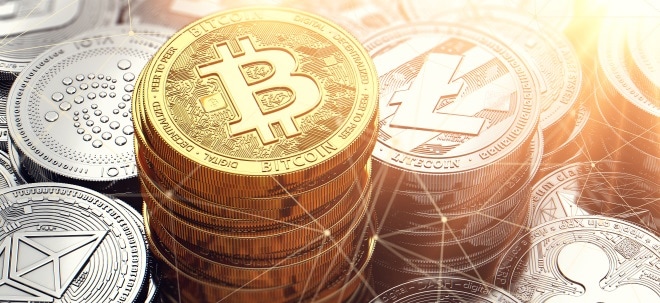NEW YORK TIMES
July 8, 2007
Why the Yield Curve Is Pointing to Cash
By PAUL J. LIM
NOW that bond yields are starting to rise and stocks are generating double-digit returns, it is easy to overlook the value of cash as an investment.
But a strong case can be made that this ultrasafe asset is even more appealing now than it was last year, when cash yields were climbing and cash investments were paying higher interest rates than riskier long-term bonds.
Professional investors are not exactly exuberant over cash today. In fact, a survey taken by the Russell Investment Group at the end of the second quarter showed that only 26 percent of money managers described themselves as bullish on this humdrum asset.
Moreover, the only time cash generates any buzz is when the so-called yield curve is inverted — in other words, when short-term cash instruments are paying out more than long-term bonds.
And in case you haven’t noticed, the yield curve in recent weeks has gone back to having a normal, positive slope — though it currently is much more flat than steep. That means 30-year Treasury bonds are now paying out more than 30-day Treasury bills, which is the way the interest-rate market typically works.
But periods of almost-flat yield curves — when short-term cash instruments are paying out nearly as much as long-term bonds, as is the case today — actually represent “the best possible environment to be in cash,” said Peter G. Crane, president of Crane Data, a firm based in Westboro, Mass., that tracks money market mutual funds and other cash investments.
Why? When the Treasury yield curve is inverted, it is typically a sign of an extremely weak economy ahead. This increases the likelihood that the Federal Reserve will step in to cut short-term rates to bolster economic activity. And once that occurs, Mr. Crane said, there’s “the risk that short-term rates will fall through the floor,” taking cash yields with them.
On the other hand, a nearly flat but positively sloped curve implies an economy that is neither too hot nor too cold.
And this Goldilocks situation is crucial for cash’s appeal.
For starters, if the economy was growing too quickly, investors might be wary of stashing too much of their money in cash because of fears of growing inflationary pressures brewing in the economy. That’s because inflation, historically speaking, has eaten up virtually all of the gains generated by cash investments. From 1926 to 2006, for example, cash — as measured by the performance of 30-day Treasury bills — returned 3.7 percent, annualized, according to Morningstar. Yet during this same stretch, inflation grew at an annual rate that was nearly as fast: 3 percent.
“What really matters in the cash market is your real return” or after-inflation gains, said Greg McBride, senior financial analyst for Bankrate.com.
Well, consider the current situation: with inflation running at an annual rate of around 2 percent or slightly higher, depending on the measure you use, and with many cash vehicles yielding nearly 5 percent or more, investors are enjoying real cash yields of about 3 percent.
[2 % Inflation ist leider nur die schöngerechnete Kern-Rate, real sind es, alles inklusive, wohl eher 3,5 % Inflation in USA. Das ergibt bei der Fed-Rate von 5,25 % aber immer noch eine Realrendite von 1,75 %. Beim Euro ist die Realrendite ähnlich bzw. eher noch etwas kleiner - A.L.]
“This is quite a good spread, especially when compared with the last few dozen years,” Mr. McBride said.
At the same time, economic growth appears just right for the cash market as well.
As expectations for the economy have improved in recent weeks, the consensus on Wall Street is that the Fed probably won’t have to trim short-term interest rates anytime soon. This means that the Fed is expected to keep its target for the federal funds rate, or the rate that banks charge one another on overnight loans, at 5.25 percent for at least the remainder of the year.
“Five percent is what we consider the magic number,” said Bruce Bent II, president and vice chairman of the Reserve, a cash management firm that was a pioneer in money market mutual funds. He said that when the federal funds rate is at 5 percent or higher — and when cash investments are paying nearly that level — investors typically give cash a second look.
But doesn’t the healthy economy make stocks more attractive when compared with other assets, including cash?
The answer is yes and no.
Yes, a strong economy will certainly embolden the equity bulls. But keep in mind that in recent weeks the strong economy has translated into slightly higher long-term bond yields. [Liegt IMHO eher an Verkäufen von US-Staatsanleihen von Asiaten - A.L.] And rising market interest rates pose some challenges for the stock market.
For example, when rates rise, investors are more likely to pay attention to the price they are paying for their stocks.
And this is where cash can work hand in hand with your equity strategy.
Certainly, there are risks in trying to time any market, including cash. That is why Harold R. Evensky, president of Evensky & Katz, a wealth management firm in Coral Gables, Fla., recommends that investors take a long-term, buy-and-hold approach with their core investments.
But with a minority stake, he said, investors may want to seek out opportunities in particular segments of the market. And when it comes to that small, noncore portion of your portfolio, if you can’t find any stocks you truly want to put your money in right now, there is little harm in “keeping your powder dry in cash,” he said.
Similarly, if you have already enjoyed handsome gains in some of your stocks and want to take some of those profits off the table — but don’t have any new ideas to invest in just yet — the attractive yields now offered by cash will buy you some time.
This is one reason that Jeffrey L. Knight, lead manager of the Putnam Asset Allocation funds, has recently allowed the cash stakes in his portfolios to build gradually.
Mr. Knight noted that in his most aggressive asset allocation fund, he typically likes to keep next to no cash. But today, it is up to about 4 percent of his portfolio. And in a more conservative fund, where he typically likes to maintain a cash position of 5 percent to 10 percent, cash now represents more than 15 percent of total assets.
OF course, there is another reason to embrace a little more cash these days.
“You have to remember that since 2003, just about every single asset class you can think of has been up every single year,” Mr. Knight said. And “it’s plausible that some exogenous influence — whether it’s a change in risk appetite or something else — could reverse this trend,” he added.
If that were to occur, it wouldn’t be out of the realm of possibility that all or many of those asset classes might fall in lock step, Mr. Knight said. “Now, that’s not in our forecast,” he stressed. But then again, at a time when this risk-free asset is offering 5 percent yields, it probably won’t hurt to have a cash cushion.
Paul J. Lim is a financial writer at U.S. News & World Report. E-mail: fund@nytimes.com. |


 Thread abonnieren
Thread abonnieren


